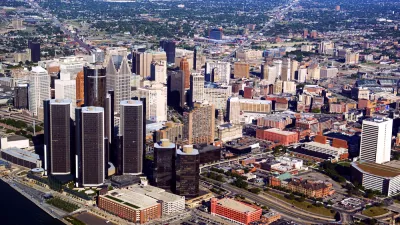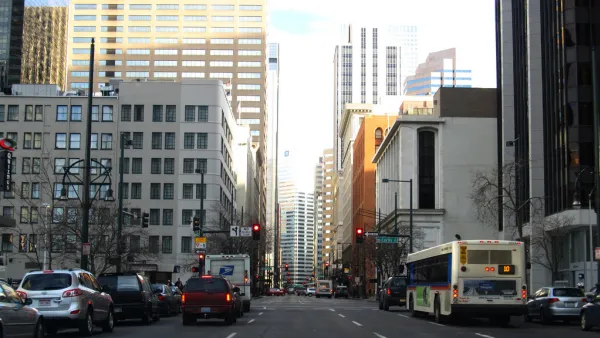Central districts have been surging back since the 1980s. But in most cities, the upper third of earners still favor outlying areas and are underrepresented closer to downtown.

In a piece for City Observatory, Daniel Hertz discusses data from a recent study on the changing demographics of American downtowns. The researchers "measured what percentage of people within three miles of their city's central business district lived in a Census tract that was in the top third. Unsurprisingly, in almost every city, that percentage increased dramatically between 1980 and 2010." The article includes a chart demonstrating that shift.
But that story, which has become accepted canon, still doesn't reflect reality for most cities. From the article: "Still, despite all the progress American central cities have made in economic development, it's important to note that most [central downtown] areas remain disproportionately poor. Even in 2010, cities where upper-income neighborhoods were underrepresented in central areas outnumbered those where upper-income neighborhoods were overrepresented by 32 to 17."
Nevertheless, the data shows a clear trend toward concentrated downtown wealth. Hertz notes how that trend depends on the young, educated demographic. "We were also struck by how much overlap there was between the Cleveland Fed's data and our findings from City Observatory's Young and Restless report late last year."
FULL STORY: More evidence on the changing demographics of American downtowns

National Parks Layoffs Will Cause Communities to Lose Billions
Thousands of essential park workers were laid off this week, just before the busy spring break season.

Retro-silient?: America’s First “Eco-burb,” The Woodlands Turns 50
A master-planned community north of Houston offers lessons on green infrastructure and resilient design, but falls short of its founder’s lofty affordability and walkability goals.

Delivering for America Plan Will Downgrade Mail Service in at Least 49.5 Percent of Zip Codes
Republican and Democrat lawmakers criticize the plan for its disproportionate negative impact on rural communities.

Test News Post 1
This is a summary

Test News Headline 46
Test for the image on the front page.

Balancing Bombs and Butterflies: How the National Guard Protects a Rare Species
The National Guard at Fort Indiantown Gap uses GIS technology and land management strategies to balance military training with conservation efforts, ensuring the survival of the rare eastern regal fritillary butterfly.
Urban Design for Planners 1: Software Tools
This six-course series explores essential urban design concepts using open source software and equips planners with the tools they need to participate fully in the urban design process.
Planning for Universal Design
Learn the tools for implementing Universal Design in planning regulations.
EMC Planning Group, Inc.
Planetizen
Planetizen
Mpact (formerly Rail~Volution)
Great Falls Development Authority, Inc.
HUDs Office of Policy Development and Research
NYU Wagner Graduate School of Public Service





























